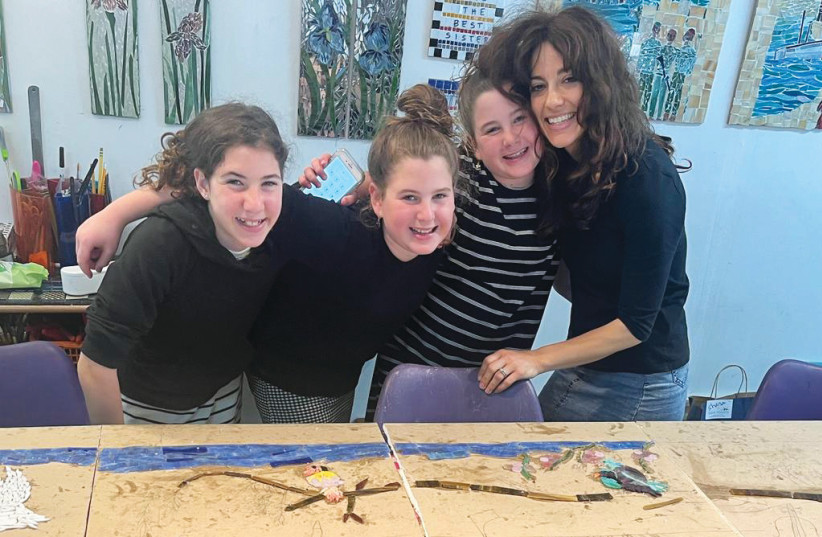The Koby Mandell Foundation, created in 2001 after the murder of my son, 13-year-old Koby Mandell, and his friend Yosef Ish Ran, runs many support groups for women. The foundation works with bereaved children, mothers, and widows to empower them to live fulfilled and happy lives even in the face of devastating loss.
Most of the women have lost young children or young husbands. One of the goals of the Koby Mandell Foundation is to teach these women to use their grief to build and create.
For the past 10 years, mosaic artist Roochie Sinai has invited these women to workshops in her Jerusalem studio. The women create works from broken glass that they piece together to make pictures, tables, lazy Susans, and Judaica such as challah boards. In the studio, the acts of breaking and repairing are creative and fun; this work of healing is central to the mission of the Koby Mandell Foundation.
Using grief to build and create
Sinai – dedicated, talented, and sensitive – gives her whole being to these women. Thus it’s not surprising that when the Hockley family decided to make a mural in memory of their father, Benjy, for their Modi’in synagogue, they turned to her since Debra had been part of the Koby Mandell Foundation’s mosaics class. The family was soon to celebrate the bat mitzvah of the girls. Yes, girls: triplets.
Their father had died of illness, and the family wanted to find a way to memorialize him at the same time as they celebrated the girls’ accomplishments. They also wanted to fete their amazing community in Modi’in – to give back to those who had provided them with so much love and support.

All summer the girls and their mother worked to create panels for a wall of the synagogue. In their bat mitzvah speech, the girls said their mother had taught them that it was possible to hold two emotions at once, to feel both excitement about their bat mitzvah and sadness about their loss. Crafting the mural together allowed them to feel the satisfaction of shaping a meaningful object, while remaining mindful that this mosaic was in memory of their father.
Their objective? They wanted anyone who laid eyes on the mosaic to feel the joy their father had embodied.
THE THEME of the mosaic is the holidays, as Benjy was born on Passover and died on Sukkot. He was a man who appreciated and enjoyed the holidays. Thus there are many images in the mosaic connected to happiness and the holidays – a pond representing Sukkot’s simchat beit hashoeva; a tree signifying the family’s strong roots in the community; and a sun over the Western Wall symbolizing how Benji always took his children to pray there on both holidays.
“The mosaic is an expression of complete love, gratitude, and joy,” said their mother, Debra Hockley Zelig, who has since remarried.
Sinai’s studio in Hutzot Hayotzer, Rave Mosaics, is open to the public and is a place where students can attend group or private mosaic classes. You don’t have to be bereaved to enjoy the act of breaking and restoring, and you don’t have to be an artist. Mosaics give everyone a chance to express themselves in vivid color. It is an art form that is forgiving – there are no mistakes in mosaics.
Workshops are available to anyone who wants to try something new, and bring color and joy to the world.
To learn more, contact Roochie Fishel Sinai: ravemosaics@gmail.com.
For info on the Koby Mandell Foundation, contact Sherri Mandell at sherri@kobymandell.org
